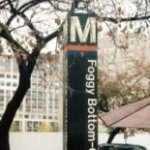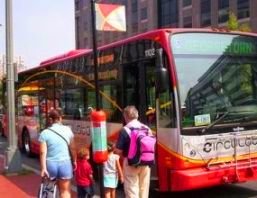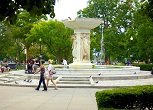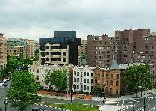The history of Washington DC's Chinatown is closely aligned with the story of Chinese immigration into the United States; an experience of discrimination, and a search for assimilation into American society. Chinese immigration began in the 1850's, as thousands of Chinese people fled economic hardship in China to seek opportunities as part of the California Gold Rush. As the Gold Rush came to end many of them stayed in this country and found work as laborers in California and other western states.
Initially, Chinese immigrants were tolerated as a valuable supply of cheap labor. However, during and following the 1870�s economic depression work became scarce and Chinese people became scapegoats and were blamed for taking away job opportunities. These sentiments escalated into a series of exclusion acts, the most notable of these being the 1882 Chinese Exclusion Act, which aimed to restrict Chinese from immigrating, owning property, and becoming citizens.
In response to these difficulties and a desire for cultural familiarity, Chinese immigrants settled in close knit urban enclaves. These "Chinatowns" accommodated separate societies where the language could be spoken, the culture celebrated, and where economic opportunity existed and a stable living could be achieved.
The first Chinese immigrants arrived to DC in 1851. By 1884, the first Chinatown in Washington DC was established on Pennsylvania Avenue with approximately 100 residents in a dozen or so buildings. By 1898, Chinatown had expanded to include parts of 3rd Street NW. By 1903, Chinatown was bustling with drugstores, restaurants, barbershops, tailor shops, and community organizations.
Chinatown rapidly expanded until 1929, when the government forcibly removed the entire population in Chinatown to redevelop the area into the Federal Triangle Project, a group of government and cultural buildings. The Project forced 398 Chinese residents and businesses to seek out a new home against the resistance of white residents. Despite this major setback, Chinese residents and businesses formed a new Chinatown in 1931 between 5th and 7th Street NW. At this new location, they sought to restart their businesses and reestablish their culture and its visible expression.
By 1936, 800 people, including 32 families, were Living in Chinatown. They established Chinese schools, clubs, and entertainment facilities. Chinatown also had a number of community organizations including family associations, to provide social services and support; district associations, which settled disputes; and civic or merchant associations.
The Immigration and Naturalization Act of 1965 removed the ban on Asian immigration. However, the 1968 riots in Washington DC, the city's rising crime rate, higher taxes, and deteriorating business climate spurred many Chinese residents to move to the suburbs. When the Gallery Place-Chinatown Metro Station opened in 1976, it was simply named Gallery Place. It was renamed Gallery Place-Chinatown in 1986. By 1977, about 20 Chinese laundries were left among the original 153 in the DC area.
Between 1970s and early 1980s, Chinatown went through another transformation. In order to increase commerce in the District, the DC government finalized its redevelopment plan for the Convention Center and Sports Arena and proposed the construction of a DC Convention Center (now demolished) at the heart of the existing Chinatown between 9th and 11th Streets.
To provide affordable housing for the low income Chinese displaced residents from the old Convention Center location and to preserve what was left of Chinatown, Chinese community groups worked together on the Wah Luck Housing Project at the corner of 6th and H Streets NW while the Convention Center was being constructed. Funding was secured from the U.S. Department of Housing and Urban Development and the 153 unit Wah Luck House was completed in 1982.
With access to public transportation and better options for affordable housing, many Chinese have continued to move to the suburbs. As property values in Chinatown increased, the remaining Chinese property owners began selling and closing or relocating their businesses. By the late 1980s, only 25% of the businesses in Chinatown remained Chinese owned. This continues to post challenges for retaining the authenticity of Chinatown today with only 30 Chinese businesses remaining.
One of the most important initiatives to anchor Chinatown as a cultural destination and a neighborhood was the construction of the Friendship Archway in 1986. This 48-foot-high, 75-foot-wide gateway is the nation's largest Chinese archway and serves as the gateway into Chinatown and one of DC's famous landmarks. It also symbolized the friendship between DC and the city of Beijing.





